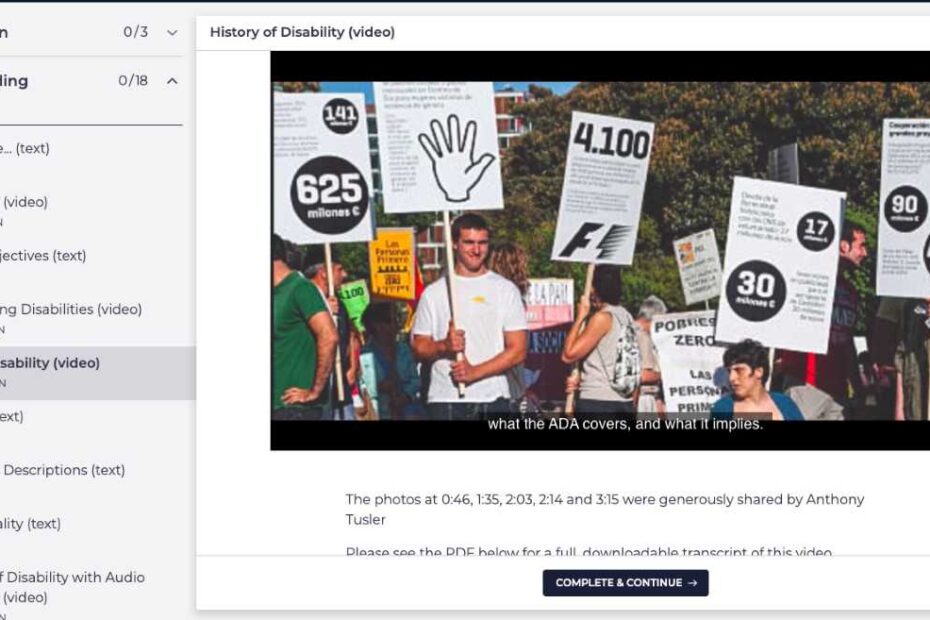By Susanne Meyer
The Oscars occur on Sunday, April 25 this year, and the disability community has its collective eye on one particular film: Crip Camp. It is nominated for Best Documentary Feature and produced by the Obamas’ production company with Disability Rights activist Jim Lebrecht as director. The documentary chronicles the adventures of a group of adolescents at Camp Jened, a summer camp for teenagers with disabilities. Relying on the bonds forged and the seeds of rebellion planted at Camp Jened, many of the movie’s main characters go on to become integral parts of the Disability Rights Movement in the 70s and 80s. The second half of the film follows them on their journey to getting disability laws adopted and enforced.
Although I work in the Disability Inclusion space and would describe myself as an ally to the Disability Rights Movement, I have to admit that I dragged my feet in actually watching the movie – in fact, my boss had to practically add it to my “To Do” list to get me to sit down and watch it finally. I admit that part of the hesitation stemmed from reviews I had read about the movie, many of which called it “heartwarming” and “inspirational.” What I expected was another sentimental fluff piece. That is not what I got. Though I would agree that the movie is inspirational — it is not in the traditional “feel good” sense.
For many of the Camp Jened campers, these Summers represented their first opportunity to meet and interact with others like themselves. It gave them a safe place to voice their feelings of isolation and discrimination. Hearing their same sentiments echoed by others, having a forum to share, support, and reinforce, turned private thoughts into a powerful collective outcry – and fostered the idea that things did not have to be the way they were. Together, the campers realized they were powerful, and they could create a movement and a force that would lead others to listen. By taking leading roles in the Disability Rights Movement, the campers became activists. The second half of Crip Camp portrays our now slightly older campers as anything but passive and anything but supplicants as they claim civil rights for themselves and their community. To my mind, this is how Crip Camp is inspirational: the movie spotlights the power generated when a group of people finds a common purpose. The film beautifully documents the determination, selflessness, and solidarity the grown campers, and now Disability Rights leaders, display in pursuit of their civil liberties – risking their health and wellbeing in the process.
As the documentary comes to a close, the activists achieve critical disability laws and the accompanying regulations to be signed and enforced. But that is not the end of the story. Over the following decades, several more pieces of legislation cemented the rights of people with disabilities around the world. Though Crip Camp ends on this high note, we should not let these victories deceive us into believing that all is well and the fight is won. To this day, people with disabilities have to strive for their rights continually. Discrimination continues to stalk people with disabilities in all areas of life, perhaps nowhere more so than in the context of employment. The latest statistics from the U.S. Department of Labor show that only 33.4% of 16 to 64-year-olds who have disabilities actively participated in the workforce (compared to 76.1% of their peers without disabilities in the same age group).
This is why the struggle for full disability inclusion must continue, and this is why we at Ablr focus our efforts on removing the barriers that still stand between people with disabilities and fulfilling careers.
Crip Camp is a beautiful homage to the early days of this movement. The film serves as a repository of an astounding wealth of still pictures and video footage that preserve the passion and fury of the movement’s early days. For me, the movie could not have come at a better time – over the past year, I have been working on Ablr’s Disability Inclusion training course, Putting Untapped Talent to Work. In this context, I researched and wrote about disability history, and specifically about the beginnings of the Disability Rights Movement. To see that period brought to life by the creators of Crip Camp was inspiring. But Crip Camp is not only a celebration of the past. It is also a powerful reminder of the legacy we, as current disability rights advocates, have inherited from the giants of the movement on whose shoulders we now stand. In order to finally achieve full disability inclusion, we need to harness and reactivate the spirit of Camp Jened: a spirit of inclusion, commitment, and standing up to the status quo. The campers united to pass disability legislation that, to this day, provides the foundation for disability inclusion. We must build on this and carry the torch of inclusion into all areas of modern life.
If you haven’t watched Crip Camp yet, we encourage you to and if you have seen it, please share your thoughts with us on our Ablr360 LinkedIn page. If you want to learn more about Disability Inclusion and how you can join the Ablr team in this movement, contact us here!






